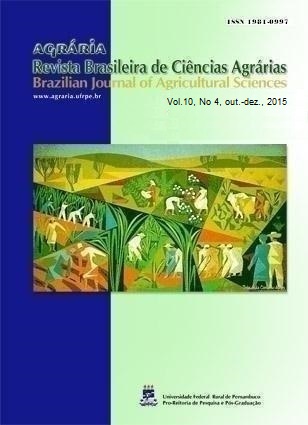Productive performance and carcass characteristics in Nellore cattle subjected to different methods of castration
DOI:
https://doi.org/10.5039/agraria.v10i4a5150Keywords:
finish, carcass fat thickness, immunocastration, vaccineAbstract
This study aimed to evaluate the performance and carcass traits of Nellore steers submitted to different methods of castration. The daily weight gain was evaluated as well as muscle growth and adipose tissue. Forty Nellore steers were distributed into three groups; T1: 20 animals immunocastrated with anti-GnRH, T2: 10 animals surgically castrated and T3: 10 animals as control group. The experimental design was completely randomized and results were compared at 5% significance level. All animals were managed in a semi-confined system, fed twice a day offering 1.5% of body weight adjusted to average of the group, with a diet containing 75% TDN and 17 % CP. The different methods of castration (surgical or immunocastration) did not influence the performance and carcass traits of finishing Nellore steers while uncastrated animals got bigger performance (average daily gain and final weight) compared to castrated group.
Downloads
Downloads
Published
How to Cite
Issue
Section
License

This work is licensed under a Creative Commons Attribution-NonCommercial 3.0 Unported License.


